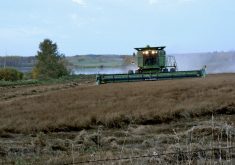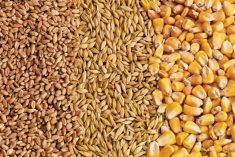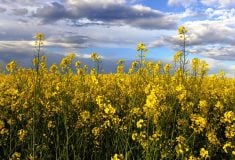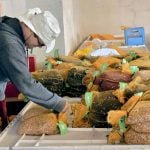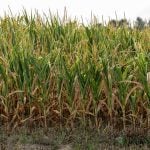Revised, Nov. 18 –– An active ingredient that’s been limited until now to killing roadside overgrowth has been approved for a supporting in-crop role, in a combination product for use in Clearfield canola crops on the Prairies.
BASF Canada last week announced approval from Health Canada’s Pest Management Regulatory Agency for Ares, a combination of imazapyr and imazamox herbicides, for the 2012 growing season.
Ares’ "easy-to-use, liquid formulation brings a new active ingredient for Western Canada," the company said in a release, citing its "superior efficacy and wider window of application on two- to seven-leaf weeds."
Read Also

The U.S. corn crop could be the biggest ever. That’s terrible news for America’s farmers.
The USDA predicts a record corn crop for U.S. farmers, who question the agency’s accuracy amidst high debt and low crop prices.
Ares is billed as a "broad-spectrum herbicide with flushing weed control combined with an enhanced window of application (to protect crops) against wild buckwheat, lamb’s-quarters, cleavers and wild oats."
The approval for Ares — limited to sale for use in the Prairie provinces only — is the first in-crop registration in Canada for the Group 2 active ingredient imazapyr.
A member of the imidazolinone family, imazapyr has previously been registered in Canada only for use in non-crop and non-grazing areas, at a concentration far higher than its approved use in Ares.
Imazamox, also a Group 2 active, has been used for years in the Clearfield system in several of BASF’s weed killer brands such as Odyssey, Solo, Adrenalin and Altitude FX.
CLARIFICATION, Nov. 18, 2011: A previous version of this article stated the PMRA’s approval for Ares was the first in-crop registration for imazapyr, which in fact has been registered previously in other countries as an active ingredient in herbicide products for in-crop use. We regret any confusion.




